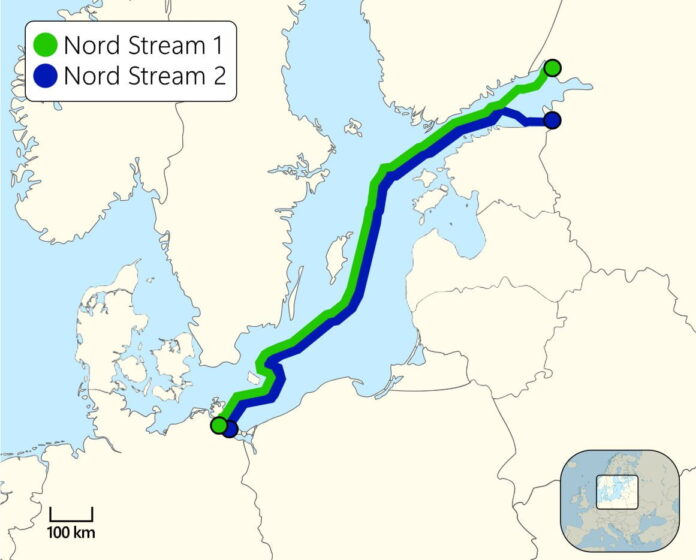
By Pornomo Rovan Astri Yoga*
When the Nord Stream gas pipelines were sabotaged in 2022, Europe learned a hard lesson: even civilian infrastructure once seen as secure can suddenly become a strategic vulnerability. Southeast Asia faces a similar challenge. The ambitious SunCable project will require not just engineering, but careful maritime planning and strong trust between nations. (From The Interpreter. The Lowy Institute.)
The Australia–Asia PowerLink, better known as SunCable, is expected to carry solar electricity from Darwin to Singapore via 4,500 kilometres of undersea cable running through Indonesian waters.
With a planned capacity of 1.75 gigawatts, it could supply up to 15 per cent of Singapore’s electricity needs – a significant contribution for a city-state long constrained by limited domestic resources.
Projects on this scale are never only about technology. Politics, law, and interdependence matter just as much. For Singapore, SunCable represents not only clean energy but a new form of strategic exposure: its electricity supply rests on Indonesia’s seabed and is subject entirely to Indonesian sovereignty.
Lessons from Malacca
China has long spoken of its “Malacca Dilemma”: the fear that energy flows through the Malacca Strait could be disrupted, potentially strangling its economy. Some 80 per cent of China’s oil imports pass through the strait aboard Very Large Crude Carriers (VLCCs). Vulnerability is obvious – but there is a critical difference. Even in tense times, China can re-route tankers along alternative maritime paths, albeit at higher cost and longer travel times.
SunCable is not so flexible. Its submarine route is fixed across Indonesia’s archipelagic and territorial waters. There is no alternative path; electricity cannot simply be “re-routed” if the cable is damaged or blocked. This makes Singapore uniquely exposed: its green energy lifeline will depend entirely on the continued security of this fixed infrastructure.
Nord Stream versus SunCable
The Nord Stream pipelines highlight a useful contrast. They ran largely across the continental shelf of other states. Under Article 79 of the United Nations Convention on the Law of the Sea (UNCLOS), foreign states explicitly have the right to lay submarine cables and pipelines on the continental shelf of a coastal state, subject to certain conditions and consultations. This legal framework offered Nord Stream a degree of international legitimacy and reduced reliance on the discretion of a single coastal state.
SunCable is very different. Its route lies almost entirely within Indonesia’s territorial sea and archipelagic waters, where Jakarta exercises full control. This makes Singapore’s reliance much sharper: no treaty guarantees, no fallback rights, only Indonesia’s continuing consent.
Strategic dependence
This is not a minor detail. If regional tensions rise, Singapore cannot secure SunCable unilaterally. Any protection or repair would require Indonesia’s approval – a major shift for a state that prizes strategic autonomy. For Indonesia, the project is double-edged. It positions Jakarta as a gatekeeper of Singapore’s energy security, a role that comes with diplomatic leverage but also heavy responsibility. Surveillance, maintenance, and even potential naval protection of a delicate infrastructure line running through archipelagic waters will be no small task.
Australia also has a direct stake as the electricity supplier, making trilateral coordination essential to ensure the project’s security.
Wartime lessons
History shows how vulnerable submarine networks are during conflict. Britain’s opening move in the First World War was to cut Germany’s undersea telegraph cables. The law of naval warfare still allows civilian networks that materially support enemy operations to be treated as legitimate targets if it is within the definition of military objectives.
Singapore may not face imminent war, but the principle remains: SunCable could quickly become a strategic target. Diversification and contingency planning are therefore critical.
Building resilience
Singapore is already working to broaden its energy mix using LNG imports, regional interconnectors, rooftop solar, and battery storage. SunCable will strengthen that portfolio, but it cannot be the silver bullet.
Nord Stream showed how a stable energy supply can be disrupted overnight. The Malacca Strait illustrates that even critical energy flows can be re-routed in times of tension, albeit at higher cost. SunCable sits in between – but its fixed route leaves Singapore particularly reliant on Indonesia’s protection. Resilience will hinge on diplomacy, coordination, and trust: a significant adjustment for a nation built on self-reliance. That is the uncomfortable truth: Singapore is betting part of its future on its neighbours. For a state that has built its identity on self-reliance, this is a profound shift.
SunCable is more than an energy project. It is Southeast Asia’s first real experiment in linking maritime security to sustainability. Managed well, SunCable could serve as a model of how countries share and protect critical energy infrastructure. At the same time, it is a reminder that even renewable electricity still relies on secure seas.
*Pornomo Rovan Astri Yoga is a PhD candidate in International Law at the Australian National Centre for Ocean Resources and Security (ANCORS), University of Wollongong, and an officer in the Indonesian Navy (TNI AL).


